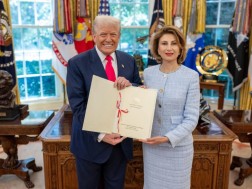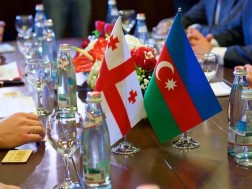
According to the NBG, the aim of this change is to promote competition and improve efficiency in the country’s payment market.The NBG explains that having a settlement account will allow payment service providers to conduct transactions without the involvement of commercial banks, reducing dependence on banking institutions, lowering costs, and minimizing operational limitations. As a result, payment transactions for customers of registered providers will be processed more quickly and flexibly.The National Bank emphasizes that this reform marks an important step toward enhancing the competitive environment, which will support the development of innovative and customer-oriented financial products in Georgia.
1765541062

Under the amendment to the Organic Law of the National Bank, the NBG gains the authority to request and review information from VASPs during on-site and remote inspections. This includes monitoring minimum regulatory capital, risk management frameworks, asset and capital requirements, and other prudential standards.The National Bank of Georgia emphasizes that this change will enhance consumer and investor protection, ensure the technical and operational sustainability of VASPs, and align Georgia with international best practices.The NBG notes that the rapid growth of virtual asset services and their user base since 2023 necessitates stricter oversight. The expanded mandate includes prudential supervision, capital adequacy checks, consumer rights protection, and the introduction of cybersecurity and operational risk standards.
1765451386
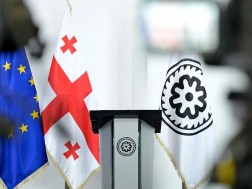
Under the changes, the threshold for disputes handled by the National Bank’s Dispute Resolution Commission has been doubled. Consumers can now file complaints for cases where the value of the dispute does not exceed 100,000 GEL, up from the previous limit of 50,000 GEL.The amendments also clarify the legal procedures for delivering the Commission’s decisions, ensuring greater transparency and legal certainty.Operating since 2023, the independent Dispute Resolution Commission offers alternative mechanisms for resolving complaints related to unauthorized transactions, errors in payment execution, incorrect deductions, and other similar issues, supporting the development and reliability of Georgia’s financial sector.
1765451199

The highest growth in November, 0.58%, was recorded by the conservative portfolio, while the gains of the balanced and dynamic portfolios amounted to 0.39% and 0.2%, respectively.Despite the relatively low monthly growth, the dynamic portfolio has maintained its leadership in terms of profitability since the beginning of the year: Dynamic – 14.13% Balanced – 12.26% Conservative – 10.76% In addition, the dynamic portfolio has also been leading in terms of annualized income since its inception (August 6, 2023), and its profitability is equal to 14.3%, while the corresponding indicators for the balanced and conservative portfolios are 13.1% and 11.8%.The assets of the Pension Fund of Georgia exceeded GEL 8 billion by the end of November, and the generated income reached GEL 2.2 billion.
1765451034

According to the Ministry of Finance, the purpose of the visit is to review Georgia’s macroeconomic and fiscal parameters and to discuss medium-term fiscal policy and forecasts. Khutsishvili briefed the mission on the 2025 budget performance and the key indicators of the 2026 state budget, which is expected to be approved by Parliament today.The sides also touched on preparations for the 2026 Article IV Consultation, a regular and comprehensive assessment conducted under the IMF Charter.Deputy Finance Ministers Giorgi Kakauridze and Ekaterine Guntsadze attended the meeting on behalf of the Georgian government.
1765367120

In addition, the Company’s Board of Directors has declared an interim dividend of GEL 2.65 per ordinary share for the third quarter of 2025. The dividend will be payable in Pounds Sterling on 9 January 2026 to shareholders on the register at the close of business on 19 December 2025. Key dates are as follows: Ex-Dividend Date: 18 December 2025 Record Date: 19 December 2025 Currency Conversion Date: 19 December 2025 Payment Date: 9 January 2026 The National Bank of Georgia’s average Lari/British Pounds Sterling exchange rate for the period 15–19 December 2025 will be used for the currency conversion and will be announced in due course.
1765282043

Following a two-year period of reducing its holdings, this marks Allan Gray’s first transaction in which it purchased shares of TBC PLC.Previously, Allan Gray last traded TBC shares on 27 June, reducing its stake from 3.8861% to 2.993%. Before that, it traded on 2 November 2023, lowering its holding from 4.9897% to 3.9978%.As a result of the most recent transaction, the number of ordinary shares with voting rights held by Allan Gray increased from 1,682,584 to 1,831,304. The trade took place in mid-November in Cape Town, South Africa.
1765281933

Specifically, he acquired these shares at an average price of £90.33227 per share, paying a total of £49,953.75.The transaction was executed on the London Stock Exchange on 2 December 2025.As a reminder, MacIntyre was appointed on 26 June this year as Chairman of the Audit Committee and as a member of the Nomination and Risk Committees. The National Bank of Georgia (NBG) also approved his appointment as a member of the Supervisory Board of Bank of Georgia from 23 June. He replaced Jonathan Muir, who could no longer hold the position in accordance with inheritance planning procedures and the NBG’s Corporate Governance Code for commercial banks.
1765281809
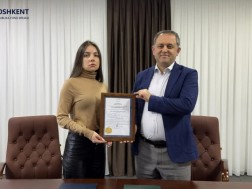
The company officially started operating on November 18, 2025, at the Republican Stock Exchange “Tashkent” under brokerage number 503.Uzbek media reports that TBC Capital’s entry into the stock exchange reflects a strong interest in the development of the country’s stock market.According to market experts, TBC Capital can make a significant contribution to strengthening and modernizing the financial sector of Uzbekistan.
1765197560
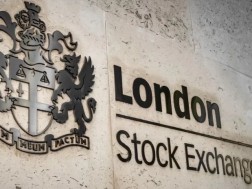
Lion Finance Group (BGEO LN) shares closed at GBP 91.70/share (+2.34% w/w and +16.52% m/m). More than 224k shares traded in the range of GBP 89.45 - 94.60/share. Average daily traded volume was 45k in the last 4 weeks. The volume of BGEO shares traded was at 0.52% of its capitalization.TBC Bank Group (TBCG LN) closed the week at GBP 40.35/share (- 1.10% w/w and -6.05% m/m). More than 421k shares changed hands in the range of GBP 38.90 - 41.50/share. Average daily traded volume was 116k in the last 4 weeks. The volume of TBCG shares traded was at 0.75% of its capitalization.Georgia Capital (CGEO LN) shares closed at GBP 28.50/share (+2.52% w/w and +11.33% m/m). More than 178k shares traded in the range of GBP 27.70 - 29.05/share. Average daily traded volume was 37k in the last 4 weeks. The volume of CGEO shares traded was at 0.51% of its capitalization.
1765197433
Non-residents cannot participate in TBC's New Year's campaign
1764844960
Implementation of the Black Sea submarine cable project is advisable
1764938990
Lion Finance Group PLC Cancels Treasury Shares and Declares Q3 2025 In...
1765282043
VASPs to Come Under Full NBG Supervision in Georgia
1765451386
GD announces legal action against BBC in international courts over 'fa...
1764590473



